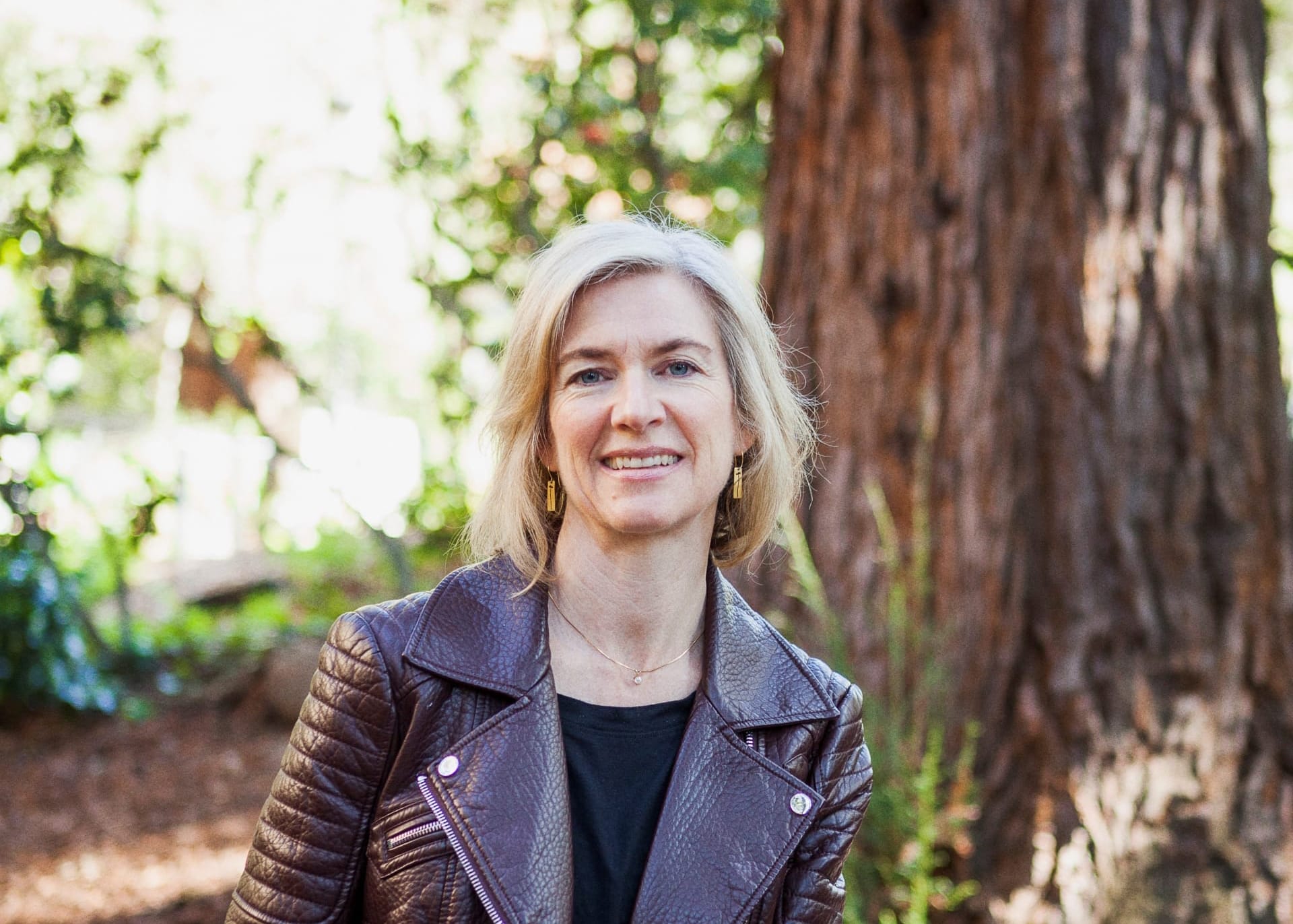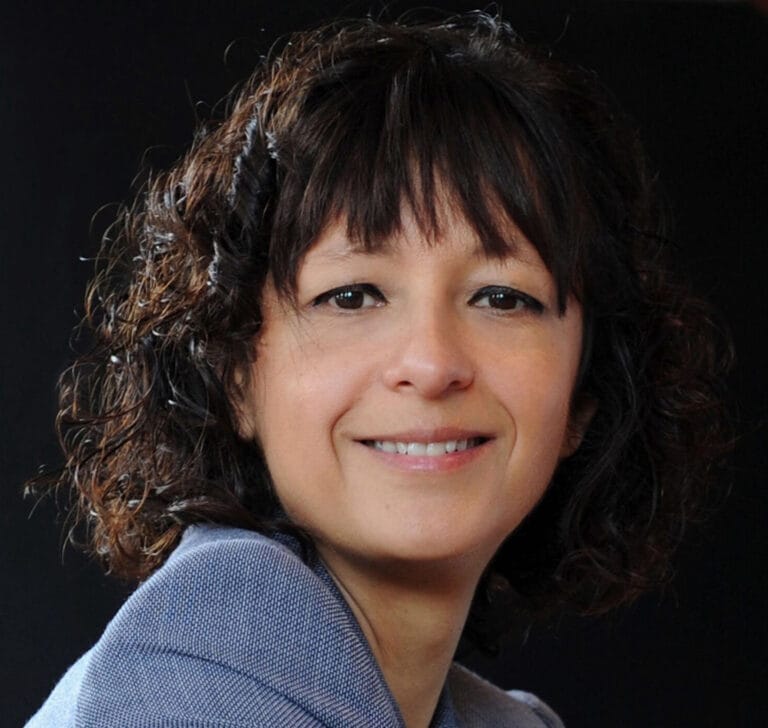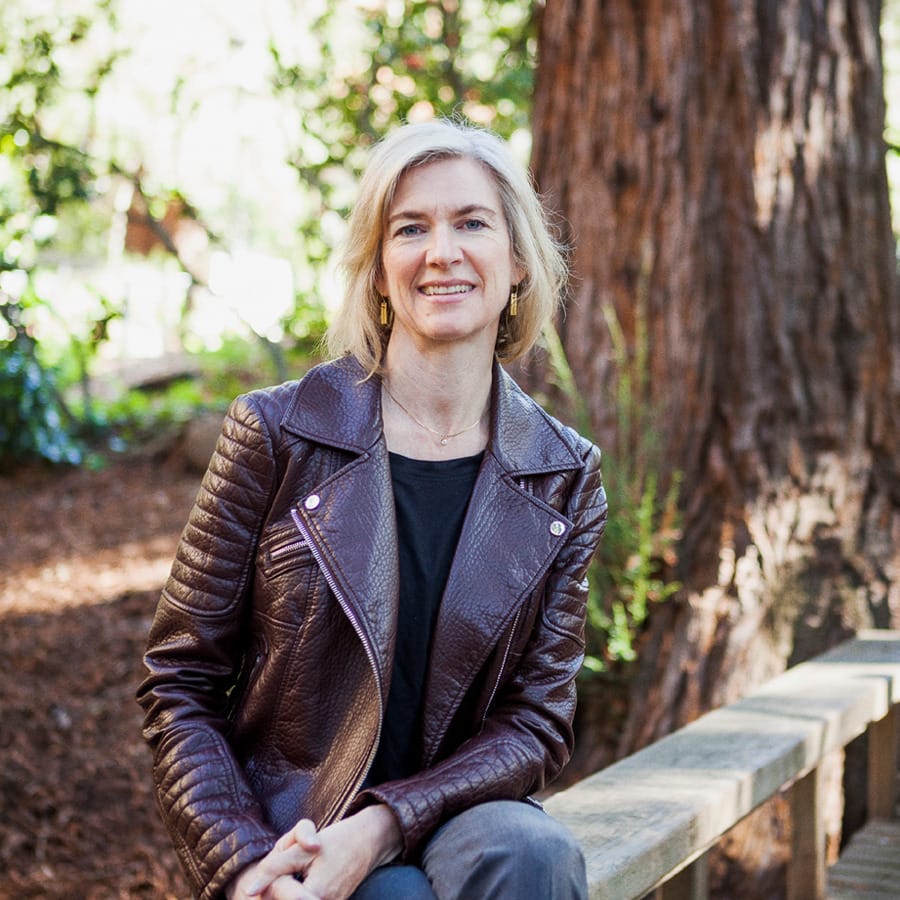Giants in genomics: Jennifer Doudna

Jennifer Anne Doudna is a biochemist who won the Nobel Prize for her work in developing CRISPR-Cas9 genome editing technology.
Jennifer Anne Doudna is a Nobel Prize-winning biochemist who led the development of CRISPR-Cas9 – a revolutionary technology that can precisely edit tiny sections of our DNA.
Currently used by hundreds of laboratories around the world, CRISPR-Cas9 is already having a huge impact on multiple areas of science, including medicine, agriculture and the food industry.
Early life
Jennifer was born in Washington, DC, US, in 1964. She moved to Hawaii with her family as a young girl, after her father accepted a teaching position there.
Her parents were both academics in the field of humanities, but Jennifer found herself drawn towards science. She spent summer holidays in the laboratories of family friends, read science books and visited museums.
In 1981, Jennifer started her undergraduate degree in Chemistry at Pomona College in Claremont, California, USA, supervised by Sharon Panasenko. Jennifer was inspired by this strong female role model, in an academic world still dominated by men.
Following her degree, Jennifer studied for her PhD at Harvard, under the supervision of Jack Szostak. Here, she gained a fascination with RNA – a molecule known to play an important role in making proteins within a cell.

Jennifer was inspired by having a strong female role model in a world still dominated by men.
Understanding RNA
In 1989, scientist Thomas Cech won the Nobel Prize for discovering that RNA doesn’t solely carry genetic information – it can also function as an enzyme and kick-start reactions inside the cell.
This form of RNA is called a ribozyme, and it can cut out and rearrange sections of RNA, known as RNA splicing.
Jennifer began working with Thomas in 1991, and he became her mentor. Together, they investigated the structure of these unusual ribozyme RNAs to understand what they look like at the molecular level and learn more about their function inside the cell. Jennifer’s lab would become the first to figure out the structure of a ribozyme.
Discovery of CRISPR-Cas9
In 2002, Jennifer moved to University of California, Berkeley, as a Professor of Biochemistry and Molecular Biology. Here, she continued to study the structure and function of RNA and became very interested in a process called RNA interference – where RNA molecules interfere with DNA to stop certain genes from being expressed.
Jennifer’s colleague Jillian Banfield introduced her to CRISPR – a gene editing system that bacteria use to fend off viruses. Jillian wondered if it was the bacterial equivalent of the RNA interference that happens in our cells.
Intrigued, Jennifer began to investigate CRISPR further. This led her to Emmanuelle Charpentier, a French microbiologist and specialist in how CRISPR works in bacteria.

Together, Jennifer and Emmanuelle discovered they could pair CRISPR RNA with an enzyme called Cas9, to edit DNA very precisely in the laboratory. This pairing – called CRISPR-Cas9 – created a system that could be guided to very specific areas of DNA and act like a pair of molecular scissors to cut out the desired piece of DNA.
What made the technique special was the incredible specificity with which it could target the genome. Any DNA in any plant or animal could be easily modified with great accuracy – reducing the risk of any off-target effects, like editing the wrong gene or any surrounding DNA, which can have devastating consequences.

"I have so much optimism about what CRISPR can do… but I’m also concerned the benefits might not reach those who need it most if we're not thoughtful and deliberate about how we develop the technology"
Jennifer Doudna
Genome Editing Controversy
The discovery of something as powerful as CRISPR-Cas9 has of course caused some controversy.
One of the reasons CRISPR-Cas9 is so exciting is its potential to cut out a gene that causes disease and replace it with one that doesn’t.
But the discovery of something this powerful has of course caused some controversy. In one of the most controversial experiments of the past decade, scientist He Jiankui used CRISPR-Cas9 to edit the genomes of human embryos, violating national regulations on biomedical research and medical ethics. The outcome was twin babies born with their genome modified to make them resistant to HIV, smallpox and cholera.
He Jiankui was widely condemned and later sentenced to jail – shining a spotlight on the moral and ethical issues associated with genome editing. Jennifer continues to be an important voice in this conversation, advocating that CRISPR-Cas9 should not be used for editing genes that can be passed onto the next generation.
"I have so much optimism about what CRISPR can do to help cure unaddressed genetic diseases and improve sustainable agriculture" Jennifer has said to Women in Medicine Legacy Foundation. "But I'm also concerned that the benefits of the technology might not reach those who need it most if we're not thoughtful and deliberate about how we develop the technology.”
There are also ongoing legal disputes about who owns the patent for CRISPR-Cas9 technology. Jennifer and her team’s claim that they developed the technology first is disputed by Feng Zhang and colleagues at the Broad Institute of MIT, who claim that they were the first to use the technology in eukaryotic systems.
Nobel Prize and Beyond
In 2020, Jennifer and Emmanuelle were awarded the Nobel Prize in Chemistry for their discovery of CRISPR-Cas9 – the first time two women have been awarded the Prize together.
"It's great for especially younger women to see this and to see that women's work can be recognized, as much as men's," Jennifer said to CU Boulder Today. "I think for many women, there's a feeling that no matter what they do, their work will never be recognized as it might be if they were a man. And I'd like to see that change, of course, and I think this is a step in the right direction."
Jennifer continues to research how genome editing and CRISPR-Cas9 could be used to combat human diseases and engineer disease-resistant food crops. During the COVID-19 pandemic, she worked with colleagues to create a CRISPR-based diagnostic test that was quicker and cheaper than standard tests.